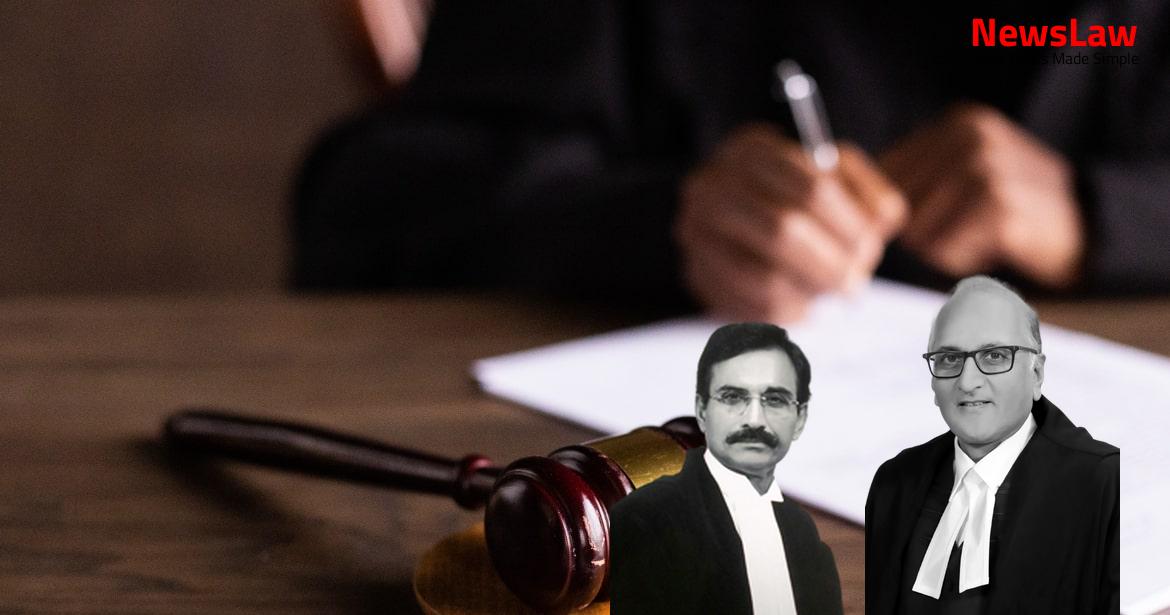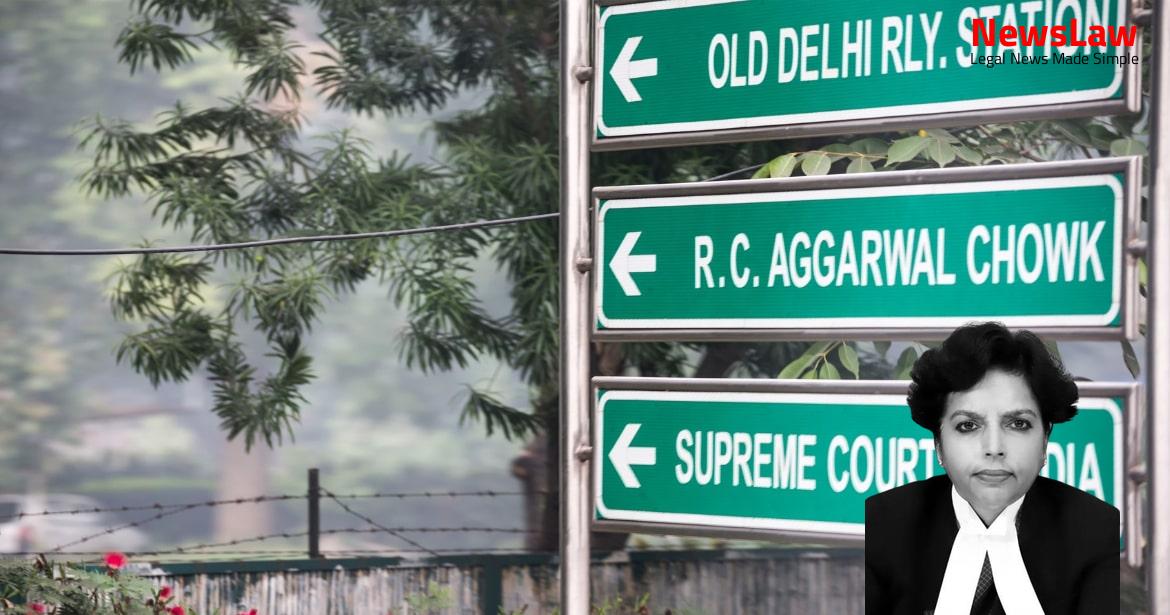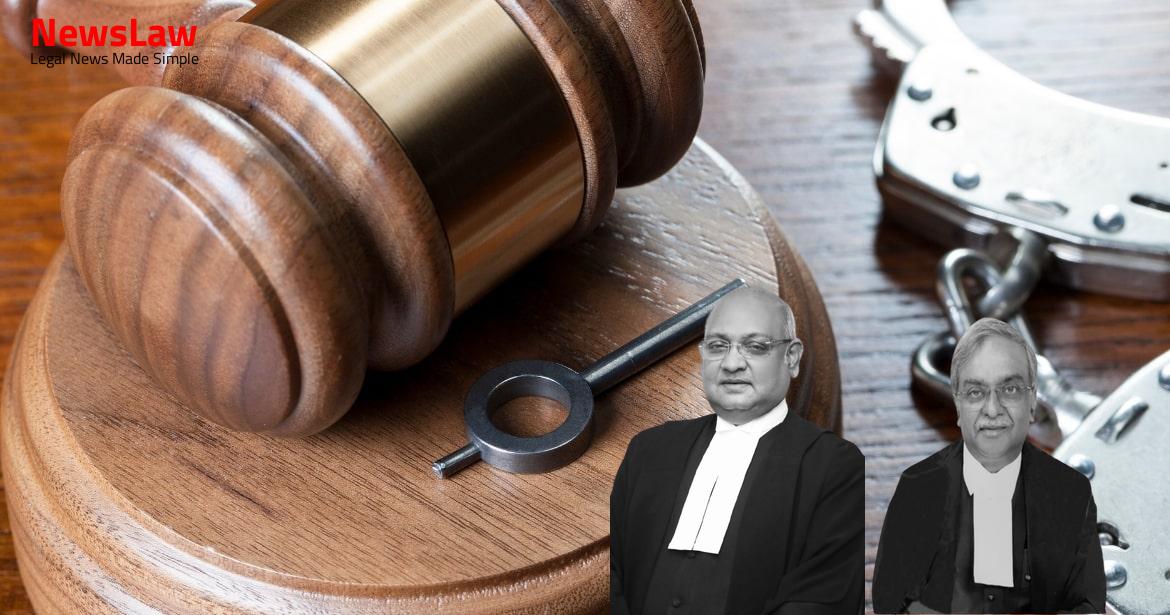Delve into the legal intricacies of a contentious land partition dispute where the court’s analysis played a crucial role in determining the final allocation of properties. This summary focuses on the court’s legal reasoning and evaluation of evidence, shedding light on how judicial decisions are made in such complex cases.
Facts
- Plaintiff entitled to 8 acres, 24 guntas, but given only 8 acres, 13 guntas.
- Commissioner held Defendants must pay Rs.4853-33/- for remaining 11 guntas.
- Defendants’ objections to Commissioner’s report rejected by Trial Court.
- Application under Order 26 Rule 9 CPC led to appointment of Commissioner for partitioning properties.
- Defendants objected to Commissioner’s report, claiming Plaintiff already compensated monetarily and living separately.
- Application under Order 41 Rule 27 CPC to show land location near village and highway denied by Appellate Court.
- Final decree petition allowed partially on 28.11.2012.
- Commissioner’s report accepted, Defendant’s objections rejected, separate inquiry for mesne profits ordered.
- Plaintiff granted 1/8 share in suit properties except Block No.163.
- Appellants filed Final Decree Petition No.11 of 2003.
- Court Commissioner appointed for house property partition.
- Plaintiff granted share in Block No.5, Harobelawadi village with mesne profits.
- Defendants appealed the judgment and decree of 28.11.2012.
- Ranganagouda Patil filed partition suit, main dispute on allotment of 8 acres, 13 guntas in Block No.5.
- Plaintiff given 8 acres, 13 guntas in Block No.5 as per partition documents.
- Plaintiff and Defendant Nos.1 to 6 are brothers.
- Plaintiff shifted to Navalur due to quarrel with father 15 years before suit filing.
- Partly decreed suit on 16.11.2002.
- The High Court rejected the submission on behalf of the Defendants regarding the non-potentiality of Block No.5 as it was not raised in the Trial Court or first appeal.
- The First Appellate Court found no suggestions of non-potentiality given to the Court Commissioner by the Defendants.
- The High Court overturned the First Appellate Court’s decision on the non-agricultural potentiality of the land without providing reasons.
- The High Court mandated dividing 8 acres 13 guntas in Block No.5 equally among sharers due to non-agricultural potentiality.
- The High Court remitted the case back for fresh consideration solely based on this ground.
- The First Appellate Court, being the final court on facts, emphasized the convenience of land cultivation during partition.
- The Court Commissioner’s report, verifying equal fertility of the land, supported the allotment in favor of the Plaintiff.
- The Appellate Court upheld the final decree allotting 8 acres, 13 guntas of land in Block No.5 to the Plaintiff.
- The Second Additional District Judge affirmed the judgment and decree with an exception to Schedule D property.
- The High Court, at admission, set aside the Trial Court and final decree judgments, remanding it for reassessment of shares in Block No.5.
Also Read: Legal Analysis on Seniority Fixation in Contempt Petitions
Arguments
- The Appellant argued that the First Appellate Court is the final Court on facts.
- The Appellant stated that the High Court should not have interfered with the judgment.
- It was claimed that the High Court reversed the judgment of the First Appellate Court based on facts contrary to the evidence on record.
- The Appellant asserted that the High Court committed a grave error in interfering with the well-considered judgment of the First Appellate Court.
- Mr. Basava Prabhu Patil, the learned Senior Counsel for the Appellants, contended that the High Court exceeded its jurisdiction under Section 100 CPC by setting aside the First Appellate Court’s judgment.
- Mr. S.N. Bhat argued that the High Court rightfully held that the land in Block No.5 has non-agricultural potentiality.
- He stated that allotting the entire Block No.5 to the Appellants would prejudice the Respondents.
- Emphasized that the land allotted to the Appellants in Block No.5 is adjacent to a busy road.
- Argued that not every judgment of the High Court needs to be interfered with if justice has been served to the parties.
Also Read: Interpretation of Section 80-IA Deductions
Analysis
- The appellant challenges the final decree by disagreeing with the factual findings made by the First Appellate Court.
- The appellant provides a different perspective on the facts presented in the First Appellate Court’s findings.
- The appellant alleges errors in the interpretation and application of evidence by the First Appellate Court.
- A critical analysis of the factual findings is conducted by the appellant to highlight discrepancies or inconsistencies.
- The appellant aims to demonstrate the inadequacies or inaccuracies in the factual determinations made by the First Appellate Court.
- In this case, the judgment of the High Court was not set aside and remanded for fresh consideration as would normally be done.
- The High Court did not provide any reasoning for its finding that the land in Block No.5 has non-agricultural potentiality.
- The First Appellate Court rejected the application filed under Order 41 Rule 27 by the Respondents, which disputed the non-agricultural potentiality of the land in Block No.5.
Also Read: Judicial Analysis on Selection Process
Decision
- Appeal allowed based on the lack of enjoyment of fruits of the decree since 2002
- Correctness of the First Appellate Court’s judgment evaluated
- Final decree by Trial Court affirmed
- High Court’s judgment overturned
Case Title: MALLANAGUODA Vs. NINGANAGOUDA (2021 INSC 178)
Case Number: C.A. No.-000805-000805 / 2021



